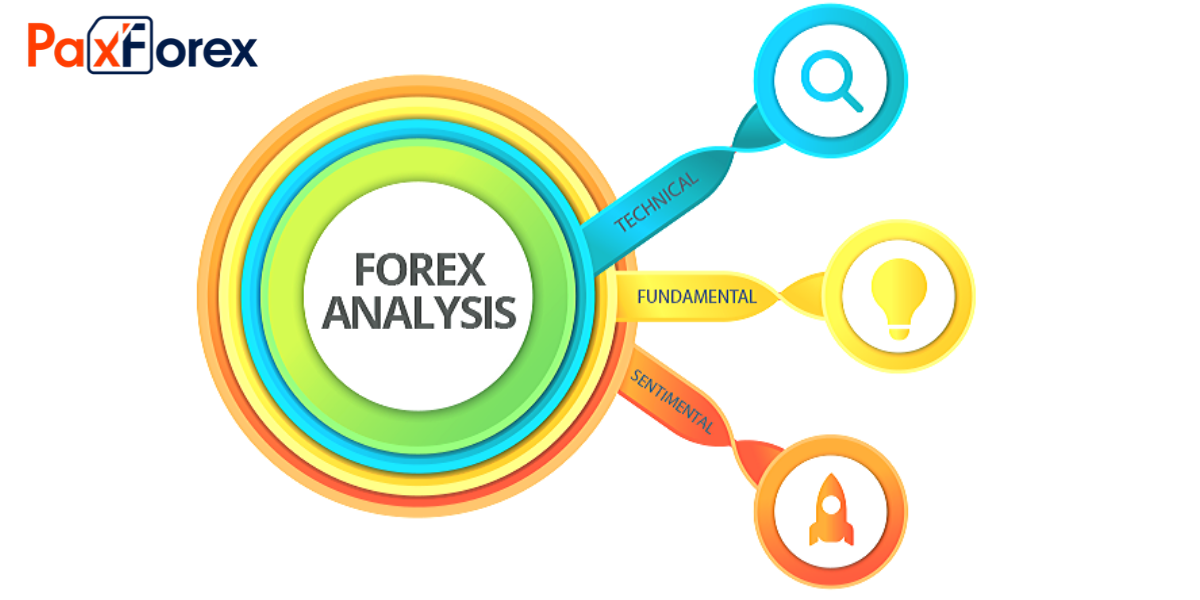
It is impossible to make a profit on Forex without a clear understanding of what currency trading analysis is, its implementation and the determination of trends on different time frames.
Therefore, traders use various tools and methods to predict future price fluctuations.
Market analysis is the study of the market to assess prices, demand, and supply, sentiment, and behavior of its participants, market conditions.
To correctly use the methods of analysis of all financial markets, a trader must study the factors that influence changes in the market situation and the formation of new trends in the currency pair in question.
The analysis and foresight of market processes originated simultaneously with the trade itself. At first, it was the collection and processing of information about the movement of caravans and ships with wool and tea, followed by the analysis of a new, rich field - the market exchange.
Received and correctly interpreted information could bring millions of profits, and incorrect conclusions could lead to bankruptcy. Understanding market processes and being able to draw the right conclusions from them became a profitable profession in consulting and asset management.
Of course, such science was not ignored by the participants of the foreign exchange market. The very search for an answer to the question of how to analyze the Forex market is a good sign.
Very often novice traders try to look for "insider" information or follow the trends and practices of other more successful colleagues, not understanding the root causes of their success. This path may seem easy, but it will only lead to mistakes and loss of money. The less money a novice trader spends on this lesson, the better.

If you want to save money, you need to analyze and develop ideas for trading in the foreign exchange market. Using charts and analytics is an ideal way to develop a Forex trading strategy.
There are three main types of analysis in the currency markets: technical analysis, fundamental analysis, and sentiment analysis.
Fundamental analysis
Fundamental analysis of the Forex market allows spotting the development of trends in various markets, using fundamental economic and political factors.
The purpose of Forex fundamental analysis can be called the definition of a fair rate, which will be as accurate as possible to the general state of the market.
It is most advisable to use fundamental analysis methods in long-term strategies, as in the short-term they don`t allow to determine the optimal entry points into the market. At the same time, the analysis of changes in fundamental economic indicators and indicators can help to determine the long-term trend at the very beginning of its development. Fundamental analysis is a good assistant for a trader.
Factors that should be taken into account for the fundamental analysis can be divided into:
- economic indicators (indicators of economic growth, the index of leading indicators, technical indicators);
- central bank policy;
- speeches of Central Bank heads, IMF experts, government ministers;
- political events that affect the economies of countries;
- environmental disasters and natural calamities.
National economic analysis bureau and international institutions regularly publish values of various economic indicators and indicators of different countries, providing new data annually, quarterly or monthly.
The most important indicators of economic growth are the gross national product (GNP), gross domestic product (GDP), industrial production index (Industrial Production) and business activity index.
The most important indices of leading indicators show the general outlook for the economy. Their growth leads to an appreciation of the national currency.
Major leading indicators cover initial claims for unemployment benefits (Jobless Claims), commodity price index and consumer expectations index (Consumer Confidence).
Undoubtedly, an important aspect influencing the rates of national currencies is inflation indicators. This category of economic indicators includes the Consumer Price Index, Producer Price Index, Retail Sales.
The main indicators of consumer activity include the volume of consumer loans issued (Consumer Credit), income and expenditures per capita (Personal Income and Personal Spending).
Indexes of business activity indicators are published by leading research institutions and national economic analysis offices.
All fundamental factors can be divided into short and long cycle factors.
Short-cycle factors include daily economic news that affects the market during several trading sessions, causing currency pairs to move in the lower time frames.
The long cycle is influenced by important macroeconomic indicators and political news. Also, economic and political news can be expected or planned, as well as unexpected or random.
Besides, an economic calendar always reflects both the actual and predicted value of the published parameter. This is done so that a trader-analyst can determine how well the market expectations regarding the value of a published fundamental factor have been met and, depending on this, make conclusions about how it will affect the rate of the currency to which it is directly related.
When you consider the releases of fundamental news, keep in mind how it may affect the future movement of interest rates. When investors are prone to risk, higher interest rates can mean more investment in the currency of a given country (which can lead to an increase in its rate). When investors are not risk-prone, money is invested in other "safe-haven" currencies.
Technical analysis
It is the study of previous market quotes using mathematical and statistical tools for forecasting future prices.
Unlike fundamental analysis, technical analysis does not consider the reasons for changes in the market situation, but analyses only the current price movement using historical patterns.
It states that any action by market participants affects price changes, which can be predicted using various graphical models, lines, and indicators.
With the help of accurate Forex analysis, any trader can get an informative picture of the market, based on the technical analysis of the current and previous price charts.
Technical analysis tools allow you to find with high precision the best moments for trading on different time frames.
The principal postulates of technical analysis say that the price takes into account all the information that comes to the market. The price movement is subject to trends and the main thing is that history repeats itself.
There are quite a few technical analysis tools and they can be divided into the following main groups:
- trend lines and support and resistance levels;
- graphical models;
- candlestick patterns;
- technical analysis indicators;
- wave technical analysis.
Sentiment analysis
Sentiment analysis is another widely used form of analysis. When you see that the sentiment of the vast majority of investors is in the same direction, it means that the vast majority of traders are already opening corresponding positions.
This may be more easily explained by example. Let's assume that the huge bulk of traders and investors have taken long positions against the euro. That is, they believe that the euro will grow. Since people vote with their trade, we can estimate through the Speculative Sentiment Index (SSI) that the sentiment against the EUR/USD pair shows that most traders are buying this currency pair.
Since we know that there is a large mass of traders who have already bought, these buyers have become future sellers. We know that since they will eventually want to close the position. This makes the EUR/USD vulnerable and the EUR/USD might go down sharply if these buyers turn around and start selling to close their positions.
Essentially, the market is a reflection of how traders feel about it. The position they take reflects the thoughts and opinions of each trader. And they all help to form the general mood of the market, regardless of the existing information.
For retail traders, however, it does not matter how confident you feel in the market. You will not be able to move it at will anyway.
For example, if you believe that the Euro will rise, but others remain bearish, there is nothing you can do about it.
As a trader, you should consider all this and be guided by the analysis of market sentiment. It is you who decides whether the market is in a rising or falling state.

Traders can use a combination of all three types of Forex market analysis. This can be done with the help of:
- Identifying long-term trends using fundamental analysis. The analysis of a country's GDP, interest rate and inflation rate gives an idea of the state of that country's economy and, as a result, its currency. For example, if the U.S. starts a cycle of rising interest rates, the U.S. dollar will look attractive. If enough investors/traders buy the US dollar, it will increase its value.
- Spotting perfect entry points using technical analysis and related indicators. Using various time frame analysis and an indicator such as MACD or RSI, traders can ascertain the perfect entry point.
- Using the client sentiment as the last checkbox before placing an order.
Traders can analyze client sentiment by observing the net number of long/short trades, or by trading the difference between net short and long movements.
Disputes between supporters of fundamental and technical analysis of the Forex market do not cease. Fundamentalists believe that the price history cannot predict further price movements, and technicians claim that the price chart originally contains everything.
Among other things, there is such an interesting type of market analysis as investor sentiment analysis. In our opinion, we should not give up any of this Forex currency analysis without first trying it out in practice. A combination of several types of currency analysis to the extent that suits you would be an ideal option.










